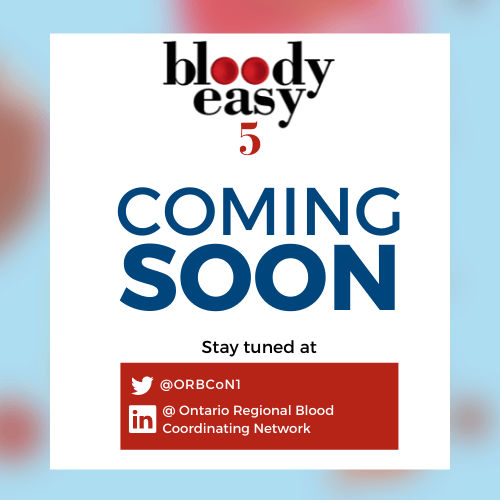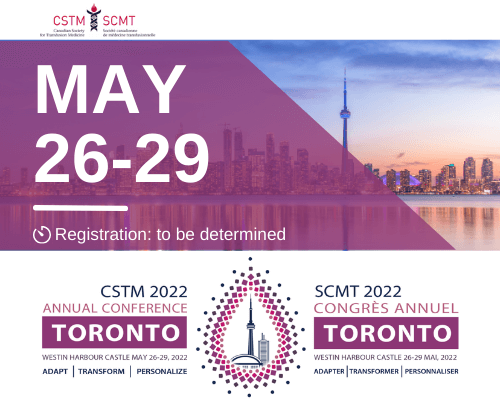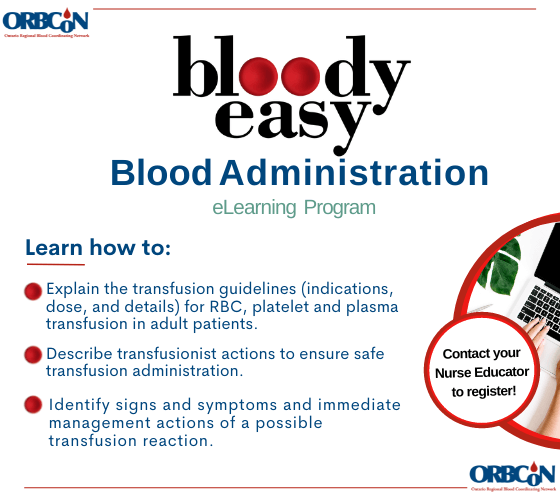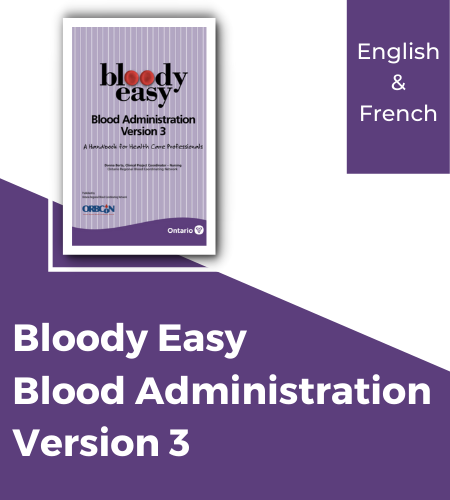Bloody Easy at 20.
Dr. Peter Pinkerton, Division of Transfusion Medicine, Sunnybrook Health Sciences Centre and Co-author Bloody Easy: Blood Transfusions, Blood Alternatives and Transfusion Reactions.
Fifty years ago, the culture of blood transfusion was a little complacent – it understood the measures necessary for immunological compatibility, the obvious demons of infectious disease transmission were largely slain (only the niggling enigma of non-A, non-B hepatitis remained) and the principal problem was adequacy of supply to support the huge increase in peri-surgical consumption. Transfusion decisions rested on the misplaced confidence of habit and entrenched “clinical expertise”. There even used to be a common dictum to the effect that, if a patient needed one unit of red cells, they really should get two (just the antithesis of today’s Choosing Wisely dictum).
“Pride cometh before a fall”; the twin spectres of HIV and hepatitis C turned the complacent culture of the transfusion world upside down. The response took time, several years, to clear (within the limits of available technology) the blood supply of infectious agents, but just as importantly, the wider scrutiny (including, for example, the Krever inquiry) laid bare a range of post-transfusion consequences and opened the door to a new culture of “hemovigilance” and objective examination of transfusion practices and outcomes. Landmark events included the introduction of the SHOT project in the United Kingdom and the publication of the TRICC clinical trial1 which posed the questions “how much is enough, and how much is too much?” in relation to red cell transfusion in critical care. These and other initiatives heralded a wave of research and clinical trials to address the nature, cause and frequency of adverse events and to determine the optimal indications for effective transfusion with mitigation of risk, including over sixty major clinical trials, completed and reported or in process, comparing high and low transfusion thresholds in various patient populations.
Ontario’s Ministry of Health (like many other jurisdictions) responded with support for initiatives designed to improve the quality of transfusion practice. It funded the highly successful ONTraC Blood Conservation2 program – a pioneer program in blood conservation and a “preview” of patient blood management. It also funded Bloody Easy which started out as a combined “on-line” education program backed by a “hard-copy” complement. The two versions have gone their separate ways with the on-line version mutating into a tool for measuring continuing competence and the print version becoming a benchtop/nursing station ready-reference to assist in day-to-day appropriate transfusion prescribing and practice
The first edition of Bloody Easy (2002) was based on the rather scanty data available in the literature 20 years ago and referred to new measures now taken for granted and obsolete practices since abandoned. With successive editions appearing every few years, the progress and refinement of knowledge (“science”), experience and practice have guided the changes and modifications to practice recommendations. Publication has become the responsibility of ORBCoN (since 2005) and Bloody Easy has become a transfusion guideline vehicle for supporting its mandate to advance the quality of transfusion practice. Audits continue to establish that there remains considerable room for improvement, and there is clear evidence to support the practical value of enhanced pre-transfusion order-screening.
The 5th Edition of Bloody Easy (“BE5”) continues to emphasize the tenets of the “Patient Blood Management” and “Choosing Wisely” campaigns to promote adjuncts and alternatives, and eliminate unnecessary use. Cryoprecipitate has been removed from the inventory of components along with discussion of its use as it has been effectively replaced with safer, more accurately prescribed and purified products (Factor VIII, von Willebrand Factor and now Fibrinogen Concentrate). Information on pathogen-reduced (“SD”) plasma has been added. After years of discussion, pathogen-reduced platelets, treated with psoralens and UV-light to inactivate nucleic acid dependent pathogens, will become the inventory supplied by Canadian Blood Services (but not yet by Héma-Québec). The indications included for prescribing platelet transfusion have been extensively reviewed in conjunction with the analysis of the recent platelet transfusion audit in Ontario. The recommendations of the recently published Massive Hemorrhage Protocol have guided the section on massive transfusion. Finally, to contribute to keeping the “pocket guide” as slim as possible, the extensive reference list is no longer included in the print version but will be available as part of the on-line version at www.transfusionontario.org.
1. Hebert PC, Wells G, Blajchman MA et al. A multicenter, randomized, controlled clinical trial of transfusion requirements in critical care. NEJM 1999; 340: 409-417.
2. Freedman J, Luke K, Escobar M et al. Experience of a network of coordinators for blood conservation (Ontario Transfusion Coordinators [ONTraC]). Transfusion 2008; 48: 237-250

Announcement: CSTM 2022 Annual Conference

Announcement: BEBA eLearning Program

Featured Resource: Bloody Easy Blood Administration Version 3

Upcoming Event: University of Toronto Transfusion Medicine Rounds

January 27th, 2022 @ 12:00 pm – 1:00 pm
Sexual behaviour based screening criteria – the what, why and how? Presented by Dr. Aditi Khandelwal